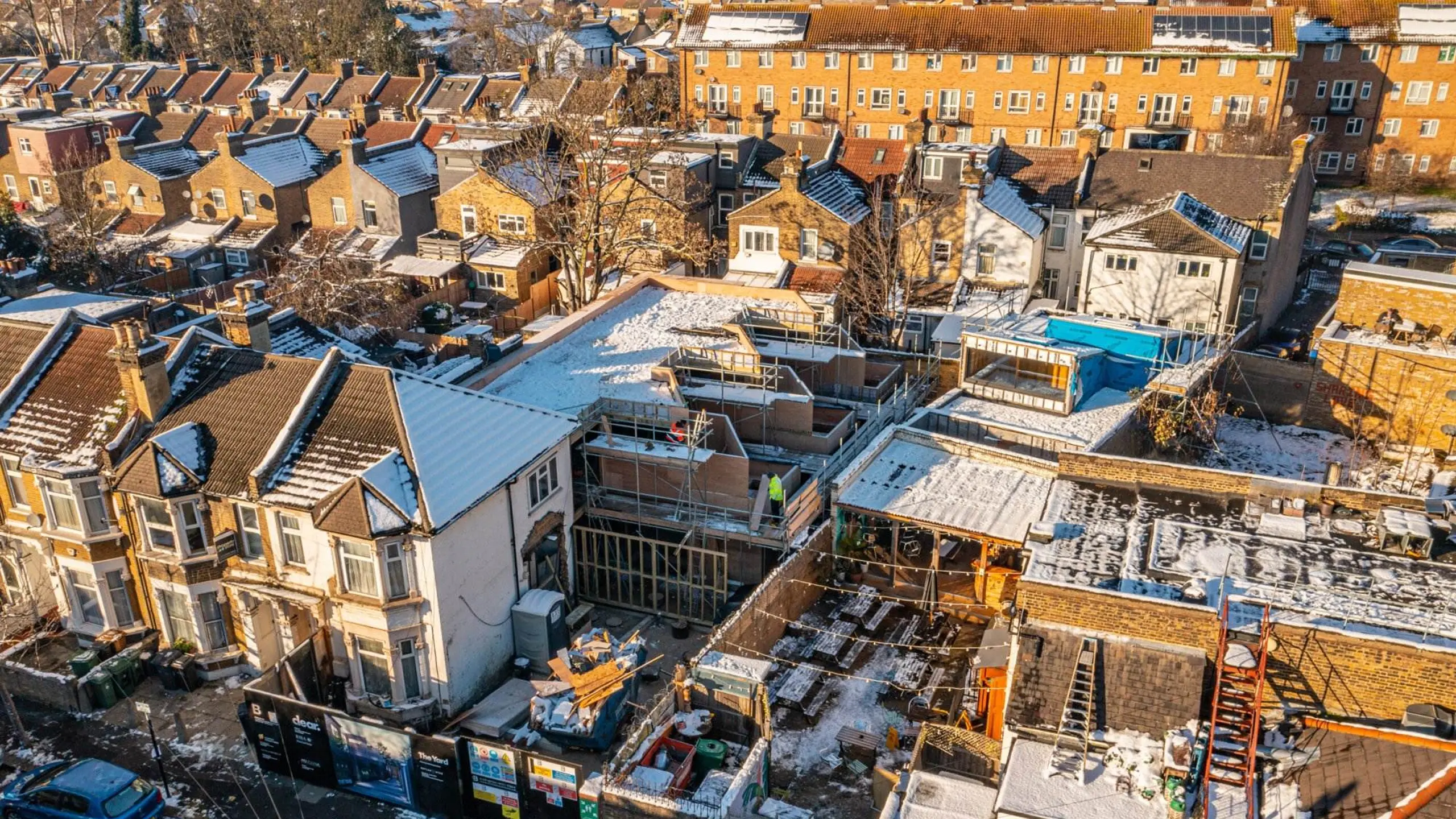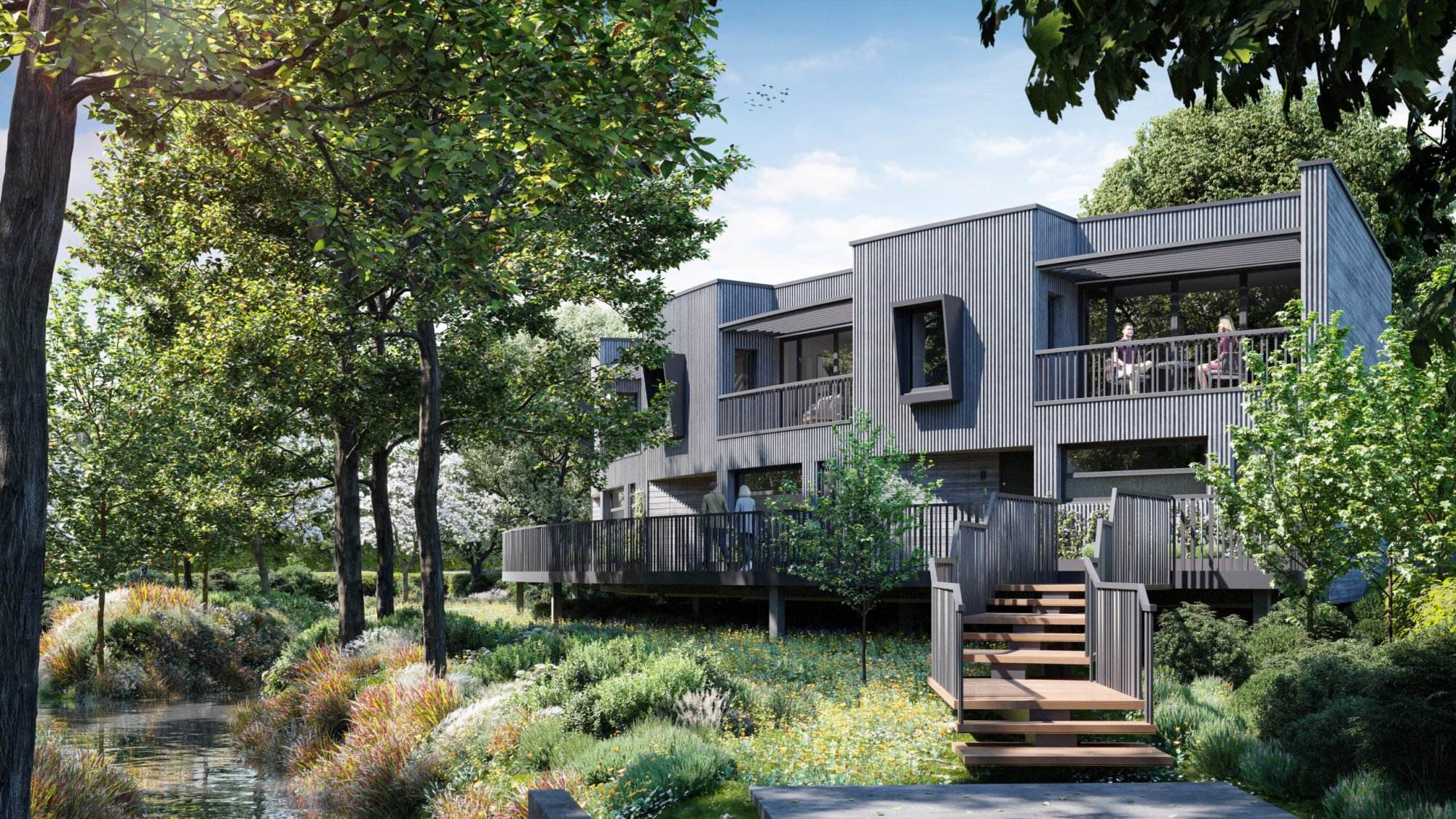Labour’s New Housing Policy

Labour’s New Housing Policy: Is this a Game-Changer for the Building Industry?
Labour’s announcement of its ambitious new housing policy sent a positive message through the property market, with the promise that gaining planning permission will be easier under the Labour government. They want to affect change, but that can’t happen unless they make it easier and quicker to gain planning on land which is awkward to use or currently omitted from development.
Labour’s Promise
The party has pledged to build 1.5 million new homes over the next five years, a significant increase from the current rate of construction, but at the present rate of planning application approval this will be impossible without serious improvements to the planning system.
The Government’s solution is to give £46 million of additional funding to Local Authorities to support the recruitment and training of Planning Officers, and speed up applications and determination times.
How can Labour achieve their targets?
I see two routes to gaining such numbers of new homes:
The Grey Belt
The first is to release land from the so called Grey Belt for large scale house building. This is land which is not currently considered ‘previously developed’, such as the many redundant glasshouse/greenhouse sites. New estates planned for this land will be formed under the guise of garden cities.
These new homes will primarily be built by the major house builders, providing little upward benefit to those developers of smaller stature. My main fear is that they tend to be built to a bland and tiny design with longevity of building structure at the back of their minds. As can be evidenced across the country, these homes are being designed to a pastiche of yesteryear without the design detailing and craftsmanship needed to prevent them from ageing badly.
However, there may be an opportunity here for these developers to partner with Local Authorities to increase the supply of affordable housing through the Government’s additional pledge of £500m towards the Affordable Homes Programme.
Small Sites
The second route, and one which is far more exciting from my viewpoint, is the use of land which is awkward, and this is something I have championed within our coined term the ‘Small Homes Revolution!’. This is building on smaller sites which take greater design aptitude to make them efficient, whilst creating truly one-off bespoke designs. The London Plan has since got behind this with their Policy H2 - a small sites policy which provides a quota for London Boroughs to develop small sites into new homes, making full and efficient use of redundant/derelict land and excess garden space. Ideal projects for small and medium sized developers.
The development of small sites should not be limited to London however, it should apply to all built up areas. This is something the Labour Government seems to have overlooked and I truly hope they see this piece and get in touch to see how pragmatic, intelligent, focused use of space can create wonderful pieces of architecture, whilst also providing new homes in very sustainable locations.
The implications of this policy extend far beyond the simple number of new homes. It will have a profound affect on landowners, homeowners, renters and every business associated with the housing market.
Homeowners
For homeowners, the most immediate impact of Labour’s housing policy is likely to be an increase in the supply of affordable housing. The party has pledged to build up to 5000 additional affordable social homes with a boost of £500 million to the Affordable Homes Programme. A significant number of homes at below market rates could help to ease the housing crisis for many people, and allow them to gain a foothold on the property market by buying a share in conjunction with an affordable housing provider. The problem with this model is that the homeowner does not own all of the property, so when it comes to selling the property, complications arise with regards to who can buy the property and the % uplift being shared between the provider and the homeowner, making it harder for the homeowner to move on to the next step of the ladder.
Increased Housing Supply
Conversely, the increased supply of homes in some parts of the country could put downward pressure on house prices, making it easier for first-time buyers to get on the property ladder by purchasing smaller properties, which if built well and are efficient in energy consumption will also reduce monthly bills.
However, the market value of these properties are widely governed by the cost of gaining planning permission, which is an ever more complex proposition. Plus of course the high cost to build on less favourable land, particularly where there is a need for better drainage systems, protection of the environment through Biodiversity Net Gain and the further cost of providing renewable technology to reduce energy consumption.
Stamp Duty
At the other end of the housing market where money to purchase property is more plentiful, we have seen the increase in Stamp Duty for second homes, which in reality will make little difference to the sale of these types of purchases. A slight increase in % paid in tax will make little difference to the overall transaction cost. It will however contribute to taxation and the use of such monies towards local services
Land Tax
Additionally, the government’s plans to introduce a new ‘land value tax’ could also have a negative impact on homeowners, landowners and renters alike. Such tax would be on the land itself not its chattels. This to me, seems highly complex and less likely to be implemented given the cost of the roll-out to enable it. Especially given Local Authorities are already making considerable yearly losses and are now having to cut services back to those which are essential, given that the Government has recently ‘found’ a £22 billion black hole in public finances!
If such a land tax did come in, this would probably be passed on to the end user of the land (from the land owner) providing even greater pressures on the poorest of society.
Property Developers
For property developers, Labour's housing policy presents both opportunities and challenges. Labour’s planning reforms introduced mandatory housing targets on local councils and paved the way for the creation of new ‘towns’ to meet their overall 5 year target. Sir Keir Starmer has also handed power to local authorities to make their own decisions on Greenbelt land, to meet local targets.
It will be interesting to see how much of this land is given over to housing when local pressure not to develop the Green Belt is often high. Will local authorities focus on re-use of land which is currently not categorised as ‘previously developed land’ but currently built upon? Such as the many redundant and ageing Glasshouse sites. This surely is the logical approach over building on virgin Green Belt. These glasshouse sites are not the green and pleasant land that is portrayed by the tag Green Belt.
Opportunities
So, on the one hand, the increased demand for new homes could lead to increased profits for developers. Plus, the government's plans to provide financial incentives for developers to build affordable housing could also be beneficial. Public-private partnerships have been busy in the background to enable such provision for larger housing schemes for many years, with Councils being an integral part of the ownership of land and private business providing the professional input and capital to enable such projects.
Challenges
But on the other hand, the policy also presents challenges. The government's plans to introduce a new 'land value tax' (if it was to go ahead) could increase the cost of doing business for developers, putting downward pressure on profit margins to a level where these types of project are no longer worthwhile. With lending institutions keeping a careful eye on the business case of development, insufficient profit will lead to reduced lending for such schemes.
Labour’s National Development Management Policies are in infancy, and the provision of releasing land which has poor aesthetic value in the Green Belt to focus on development of small sites in all built-up areas, should be the focus to gain the required housing. But this development must be at a high standard of design and not just more nondescript bog standard housing like we’re seeing on so many of the new estates.
Building on the Green Belt
To achieve these grandiose building plans requires land. Building on the Green Belt is not popular amongst constituents, mostly because there is a lot of misunderstanding around what the Green Belt is and its importance. The Green Belt was set up to prevent urban sprawl and is based on geographical location around cities rather than actual lush green land. Many areas that constitute Green Belt land are not ‘green’ at all but are actually poor quality waste-land with little environmental merit.
If as little as 2% of the Green Belt was released for housing, it could provide space for up to 2 million additional homes, and this would not affect the beautiful swathes of green and pleasant land that so many are concerned about. Most of these areas are already protected by Conservation Areas, Areas of Outstanding Natural Beauty (AONB) and Sites of Special Scientific Interest (SSSIs).
The Future
Labour’s manifesto clearly stated that they are prepared to look at what they term the ‘Grey Belt’ to free up additional land to ‘get Britain building’. This means changes to the National Planning Policy Framework (NPPF) which is already underway.
Our local London boroughs of Waltham Forest, Enfield, Redbridge and Hackney have already expressed a more flexible approach to the development of small sites in sustainable locations. Their emphasis is on design and how, creatively, a development can sit within it. Creative and contemporary design that sits on its own is something they will encourage, and this is music to our ears as we have long been proponents of creating architecture which sits harmoniously within its local environment.
To us working in the bespoke development sector, the intelligent use of small sites for bespoke one off homes, should be a policy for all built-up areas, not just the London Boroughs.

Planners and Architects
For us Planners and Architects, the government's plans to promote sustainable and innovative design could open up further opportunities for creativity. The government has proposed a set of golden rules to complement their National Development Management Policies which constitute the following:
- A minimum of 50% of homes built on Grey Belt land must be termed ‘affordable’.
- New developments must include public services and properly thought through local infrastructure such as schools, health centres and transport.
- New projects must enhance the local environment and contribute to biodiversity This includes improvements to existing green spaces.
- Sustainable building practices (low carbon homes) must be adhered to for all new developments.
Good quality, sustainable homes is an area we have been banging on about for years and its good to see the government is finally catching up. But please bring forward the use of small sites in all built up areas, not just London. Bring the Small Homes Revolution to the nation!




.webp)